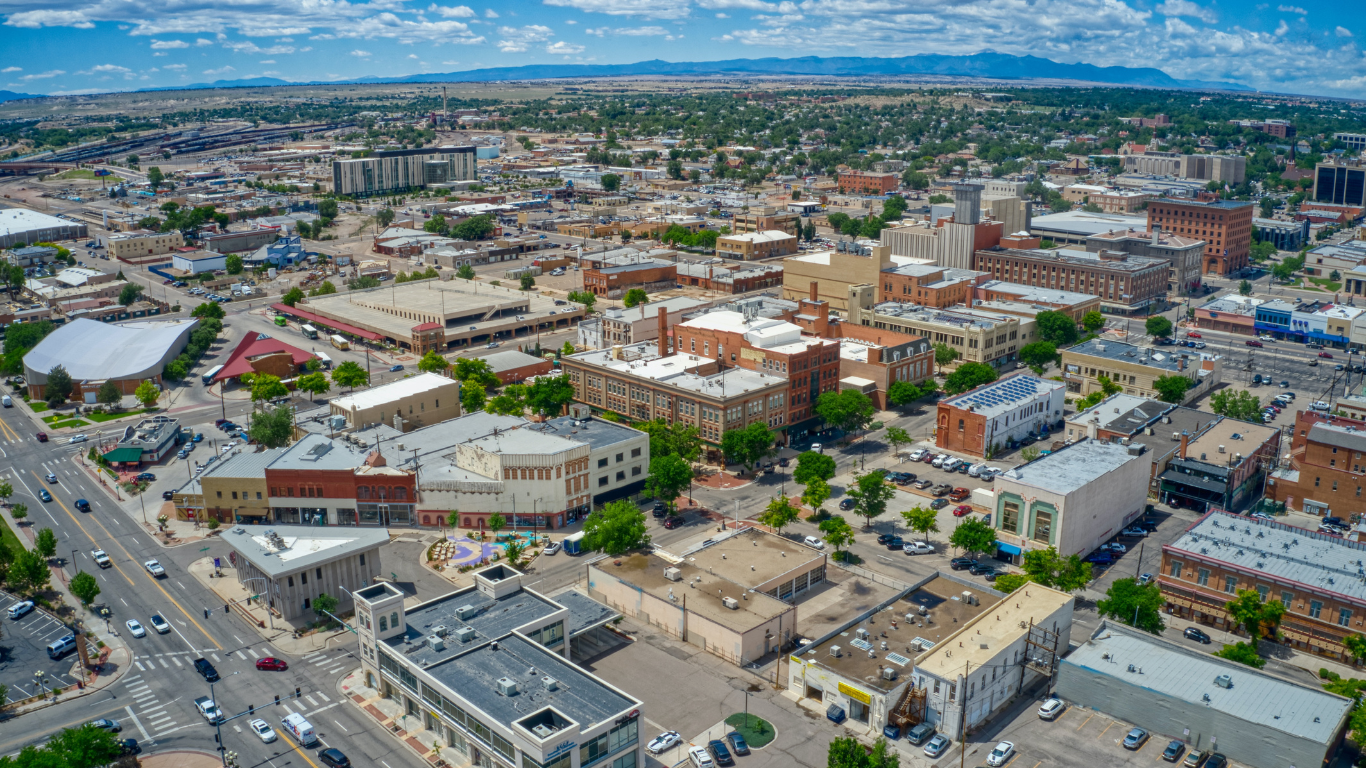
The Story of Pueblo
Pueblo, Colorado, has long been an environmental justice community. Its residents bear the weight of heavy pollution from industries, including the EVRAZ steel mill and a large coal-powered station, which sends the energy it generates not to the local community but two hours north to Denver.
Xcel’s Comanche Power Plant, the largest coal-powered station in Colorado, looms over the city of Pueblo, a community of roughly 111,000 people. Pueblo is demographically diverse with nearly 50% of the population identifying as Hispanic. Nearly 21% of Pueblo families live under the federal poverty line, nearly 4X more than the state average. As a designated Justice40 community, Pueblo is particularly vulnerable to the impacts of industrial pollution yet receives minimal support in addressing these burdens.
Despite the plant’s presence, Pueblo residents receive none of the energy from this coal plant; instead, they rely on the Black Hills gas-powered plant and deal with some of the highest electricity prices in the state. The energy produced by the Comanche 3 plant is sent two hours north to Denver, while the pollution remains squarely in Pueblo.
It’s unjust that Pueblo continues to suffer from toxic air and high energy costs; Pueblo’s people, hardworking and resilient, deserve better.
“Puebloans have repeatedly made it clear that they want wind and solar to replace the coal-fired power plant in our community. We want cleaner energy for cleaner air and healthier people. Renewable energy provides good jobs and economic opportunities for our city and county. We don't need more methane burning in our community and we certainly don't need an untested nuclear facility.”
— Jamie Valdez, Pueblo resident and Climate Justice Leader

Since its opening in 2010, Pueblo has been subject to the turbulent history of the Comanche 3 power plant. One of the state’s largest sources of greenhouse gas emissions, Comanche 3, has been plagued by unplanned shutdowns and cost overruns - the plant had to close for the entirety of 2020 and into 2021 due to breakdowns. When it is operating, thousands of tons of sulfur dioxide and nitrous oxide are released into the air annually. This pollution directly harms the health of Pueblo residents, who have higher rates of cancer, chronic obstructive pulmonary disease (COPD), and asthma.
Thanks to the hard work of community and environmental advocates, Xcel moved up the retirement of Comanche 3 from 2070 to 2031. Now, though, the state’s largest utility is considering how to replace and increase the power currently produced by C3. The utility’s transition plan includes several scenarios for meeting the anticipated growth in electricity consumption in the coming years and replacing output from Unit 3 at the Comanche plant. The plan focuses heavily on renewables–composed of solar and wind– and battery storage but includes new gas generation as well. It also keeps the door open for customers paying for false solutions like nuclear and hydrogen in future years.
Replacing Xcel’s coal plant with 100% renewable energy would prioritize the health and economic future of Pueblo and all of Colorado, ensuring affordable energy, cleaner air, and healthier communities for generations to come.
Read more about Xcel’s energy replacement plan and what we’re advocating for here.








